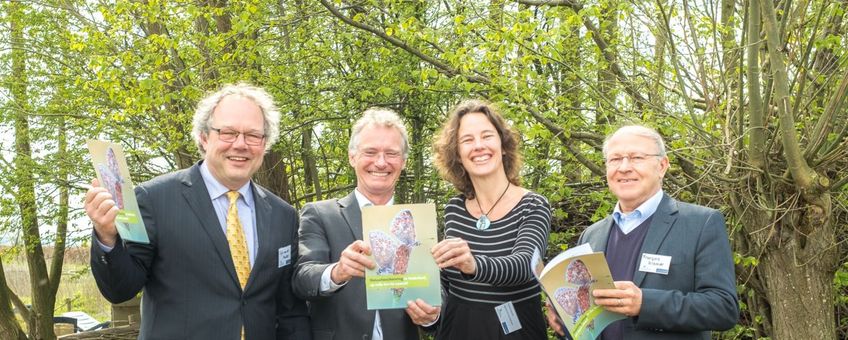
Dutch conservation organisations call upon government to take action and restore nature
SoortenNL As a direct result of European legislation on nature conservation many previously en presumed extinct species return to the Netherlands. After 40 years the otter has returned to peats in the Western part of the country, slowly cranes expand their territories and the white-tailed eagle is nesting and thriving in at least four designated nature reserves.
As a direct result of European legislation on nature conservation many previously en presumed extinct species return to the Netherlands. After 40 years the otter has returned to peats in the Western part of the country, slowly cranes expand their territories and the white-tailed eagle is nesting and thriving in at least four designated nature reserves.
Fragile recovery
As inspiring as the gradual recovery of these flag ship species – that are directly related to conservation efforts – may be, on the whole the Netherlands are playing at the bottom of the European league. As a country, the Netherlands has one of the lowest levels of remaining biodiversity; only Malta is performing worse. The keys to solve the Dutch problem are improving the implementation of nature conservation policies, embedding nature conservation policy in other policy domains such as agriculture and a positive intention to seize opportunities to increase biodiversity and the quality of nature. Moreover, it would not hurt if government would display a little more pride on the successes as we have achieved in the last ten years; that would be inspiring to overcome the difficulties that lie ahead. In some cases nature conservation efforts are malevolently placed in a negative frame while in fact they are a vital pillar in a healthy and sustainable environment for both nature and culture.
Improve the implementation of nature conservation policy
The Netherlands are far behind schedule with the implementation of its nature conservation policy. Many Natura 2000 areas, both terrestrial as at sea, still lack the management plans describing the conservation measures necessary to improve and restore nature quality. Furthermore, surveillance and enforcement of legislation virtually is absent. Not only a system of fining sometimes is necessary, an obligation to restore damage that is done, would be beneficial to nature quality.
Embed nature conservation policy in other policy domains
In the Netherlands, the agricultural landscape covers the majority of the country, therefore it serves as the biggest habitat for biodiversity. Intensive large scale agricultural policy is by far the biggest threat to biodiversity. Meadow birds are in steep decline for years now, northern lapwing, for example decreased with over 70%. A transition towards sustainable, ecological farming is imperative.
Seize opportunities for improving biodiversity
Restoring nature provides opportunities for improving water management and safety. In the province of Groningen a reserve called The Onlanden, recently protected the capital city from flooding. From this viewpoint restoring nature offers a lot of gains such as clean water, pollination of crops, recreational potential and cheaper health care by improving the quality of the air we breath.
The action plan "Protecting nature in the Netherlands: full steam ahead!" (pdf; 1,1 MB) was presented to representatives of the European commission and the Dutch government during the symposium "Biodiversity in The Netherlands, one step beyond" in Eemland.
Action plan Nature Conservation Full Speed Ahead:
✓ Improve the implementation of nature conservation policy
✓ Embed nature conservation policy in other policy domains
✓ Seize opportunities for improving biodiversity
Text: Soortenbescherming Nederland, WWF, Natuurmonumenten, Vogelbescherming Nederland, LandschappenNL, Waddenvereniging, IUCN, Natuur & Milieu en Milieudefensie
Photos: Vogelbescherming Nederland
Lead photo: from left to right: Leo van der Heiden (Ministry of Economic Affairs), Teo Wams (Natuurmonumenten), Dianne Nijland (Vogelbescherming Nederland) and François Kremer (Natura 2000 Policy Coordinator at the European Commission's Nature Unit)
